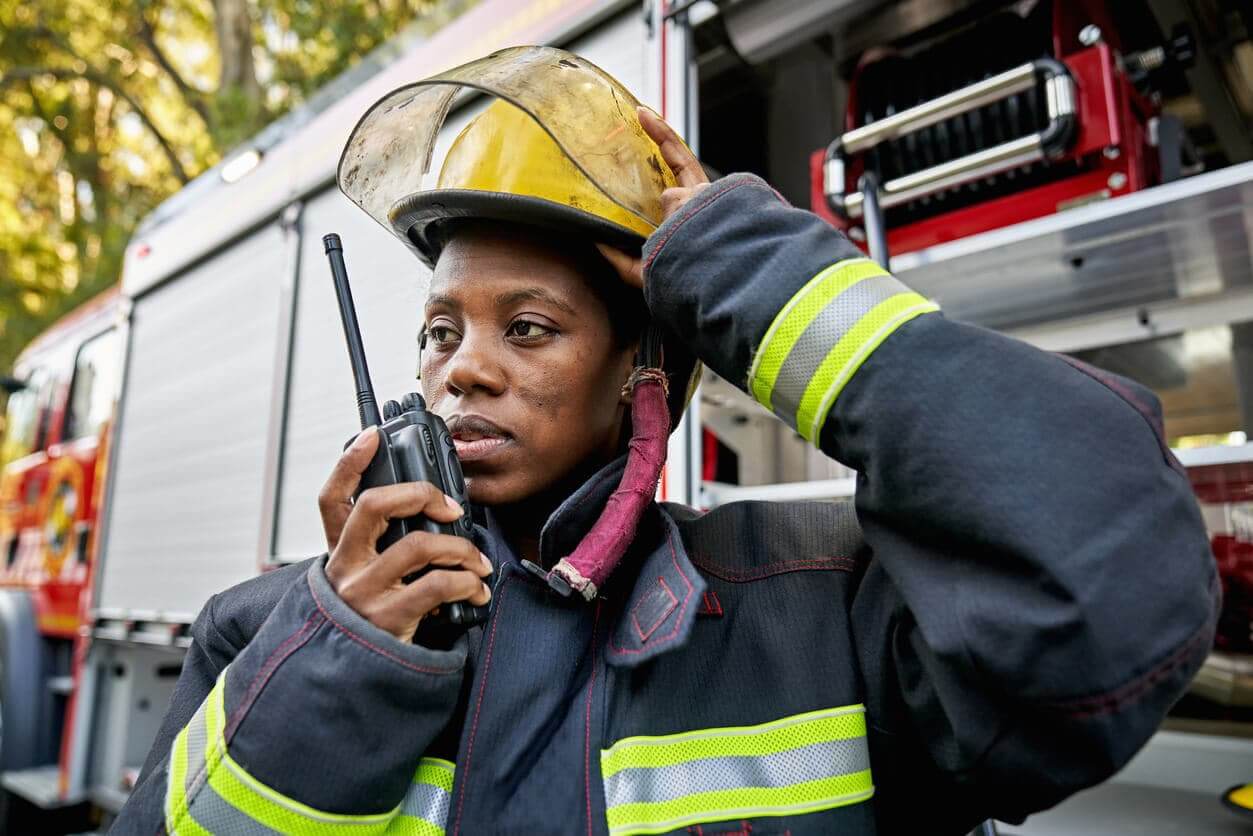Emergency responder radio communications systems (ERRCS) including public safety distributed antenna systems (DAS) and Bi-Directional Amplifiers (BDA) systems support and supply radio signals to first responders for emergency communications. This uninterrupted connectivity is essential for providing the most rapid and effective first aid services possible—even in the most isolated parts of a building, particularly stairwells and basements.
Emergency responder radio communications systems are complex and influenced by ever-evolving codes that are interpreted by local authority having jurisdictions (AHJs). However, the complexity of these systems does not relieve building owners from the responsibility of compliance. Building owners are unable to obtain a Certificate of Occupancy without an ERRCS that meets the interpretations of the AHJ in their respective regions.
Building owners and facility managers with a baseline comprehension of public safety wireless communication standards are better positioned to partner with an experienced service provider for testing and installing a public safety DAS or BDA system to ensure sustained compliance.
What Kinds of Public Safety Coverage Does My Local Authority Having Jurisdiction (AHJ) Require?
The first step to achieving public safety DAS compliance is understanding the public safety coverage requirements dictated by the local AHJ. Building owners and facility managers should consult their local AHJ for the location of their building to clarify the specific requirements for compliance.
Most cities and counties in the US have local ordinances and codes that require adequate in-building coverage for first responders. AHJ regulations require buildings to meet a minimum level of first responder communication reliability as a prerequisite for occupancy. In order to secure a Certificate of Occupancy and qualify for its renewal, the codes in force by a local AHJ must be met and continuously maintained. It is important to note that it is the building owner’s responsibility to test their building and install a public safety DAS or BDA system if needed.
How Local AHJs Interpret Public Safety Communication Codes
Instead of writing their own rules from scratch, local AHJs draw on regulations written by various organizations including but not limited to:
- National Fire Protection Agency (NFPA)
- International Fire Code (IFC)
- Federal Communications Commission (FCC)
- International Code Council (ICC)
- International Building Code (IBC)
- First Responder Network Authority (FirstNet)
Building owners and facility managers need to understand the codes put in place by the local AHJ as there’s no unified set of rules set at the federal level. The lack of unified rules makes compliance difficult to achieve as every jurisdiction will have slightly different ordinances.
Larger cities may draft their own public safety communication codes while smaller municipalities may choose to adopt the language in IFC and NFPA codes rather than creating their own. This approach to public safety coverage requirements means that the location of a building and the relevant local AHJ will dictate which codes must be met.
What Are The Main Building Codes To Follow?
Building owners must follow three main codes to meet the standards for the installation, maintenance, and use of public safety DAS or BDA systems. These codes are updated every few years and are enforced by respective local AHJs.
IFC Codes and Standards
The International Code Council’s (ICC) International Fire Code (IFC) 2021, Section 510 outlines the latest requirements for in-building emergency radio systems. These codes are updated every three years with IFC-2021 being the latest version.
Here are a few relevant sections from the IFC codes and standards related to public safety DAS or BDA systems. Be sure to read the codes directly from IFC for the full codes and standards.
- Section 510.01 - Emergency responder radio coverage in new buildings
- Section 510.4.1 - Radio signal strength
- Section 510.4.2.1 - Amplification systems and components
NFPA Codes and Standards
The NFPA has multiple chapters and sections relevant to public safety communication requirements. NFPA standards include but are not limited to:
FCC Codes and Standards
The final code building owners should be aware of is the FCC Part 90 rules and certification testing for radio products that are used in defined bands for public safety services. This code addresses the conditions under which radio communications systems may be licensed and used in public safety services.
Achieve Sustained Compliance with an Expert Public Safety DAS Partner
If the task of maintaining compliant public safety systems seems daunting, building owners should partner with experienced public safety DAS engineers to properly install, regularly inspect, and continuously maintain distributed antenna systems and bi-directional amplifiers. Dedicated DAS engineers help building owners navigate the complexities of compliance and are ready to assist in clarifying which governing codes apply to their building.







